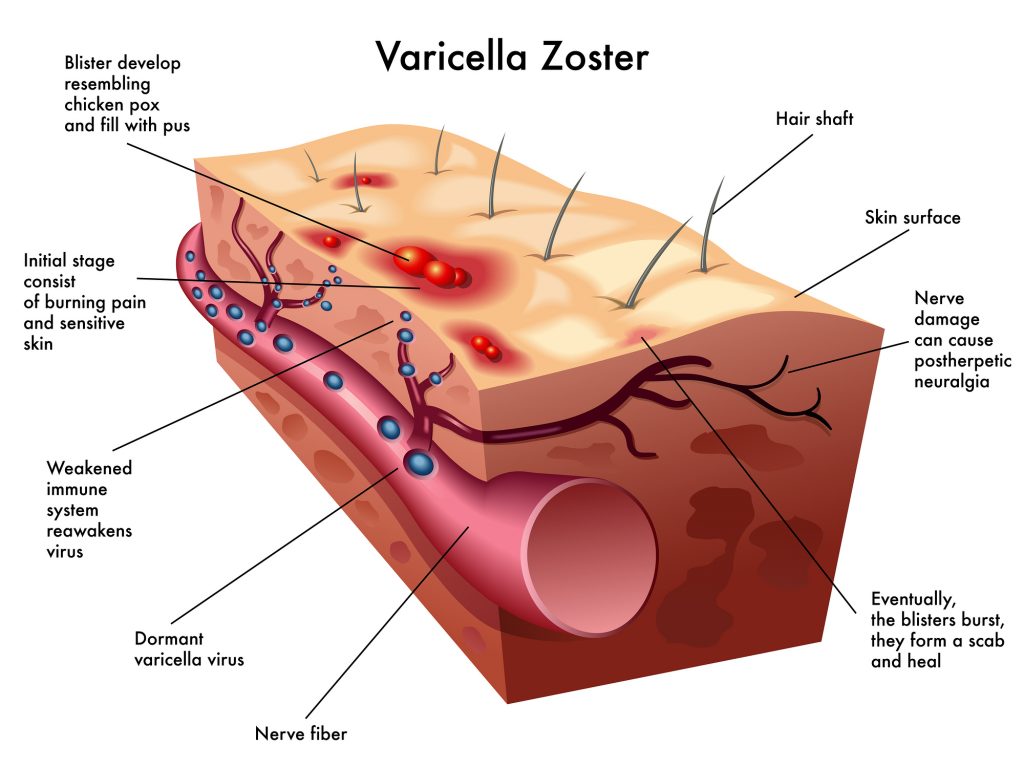
You may have heard about shingles from commercials advertising a vaccine but do you know what it is and how you become infected?
Shingles is known to the medical community as the Herpes Zoster virus. It is actually the reactivation of a previous infection of chicken pox, the Varicella Zoster virus. After a person recovers from chicken pox, the virus lays dormant or inactive in the body, usually in the nerve roots that control sensation. For reasons unknown to scientists, the virus reactivates. This results in a painful, yet localized skin rash with blisters that usually follow a single nerve distribution originating at the spine. Because of this very characteristic pattern, it will only be present on one side of the body.
Risk Factors
Risk factors for contracting shingles are common, and most people in the community have one or more these risk factors. The risk factor that most people have in common is a history of chicken pox infection or inoculation with the chicken pox vaccine, because now the person may carry the herpes zoster virus that causes shingles. Individuals over 50, and those who are immunosuppressed due to conditions such as HIV, cancer, or organ transplants have a greater chance of getting shingles. As well as those who have decreased ability to fight infection due to stress or other immune deficiencies. However, the bottom line is that the majority of the individuals who contract shingles are relatively healthy individuals.

Signs & Symptoms
The first symptom of shingles is often sensitivity, or pain in a broad band distribution on one side of the body. The pain can be burning, itching, tingling, or sharp and shooting. This can happen 1-5 days before the rash appears. The rash will appear as painful blisters on one side of the body. One of the most serious manifestations of shingles is when it infects the eye because it can lead to blindness. This is a medical emergency, and treatment should be sought out immediately!
Transmission
Shingles cannot be passed from one person to another, however if you have shingles you can pass the varicella zoster virus to another individual and give them the chicken pox. A person with active shingles can spread the virus when the rash is in the blister phase. Once the rash develops a crust, the person is no longer contagious. To prevent transmission, keep the blisters covered, wash your hands often, avoid touching and scratching the rash, and avoid contact with individuals who have weakened immune systems.
Vaccine Availability
There is a vaccine available to help reduce the risk of developing shingles, and the CDC recommends the one time vaccine for those over 60 years of age. If you are unfortunate enough to come down with shingles, there are several antiviral medications that can help reduce the length, and severity of the illness. These medications are most effective if started as soon as the rash appears. Therefore, if you think you might have the shingles, contact your healthcare provider as soon as possible to discuss treatment options.
For more information about prevention, treatment and signs and symptoms of shingles, go to www.cdc.gov/shingles/about/prevention-treatment.html.
